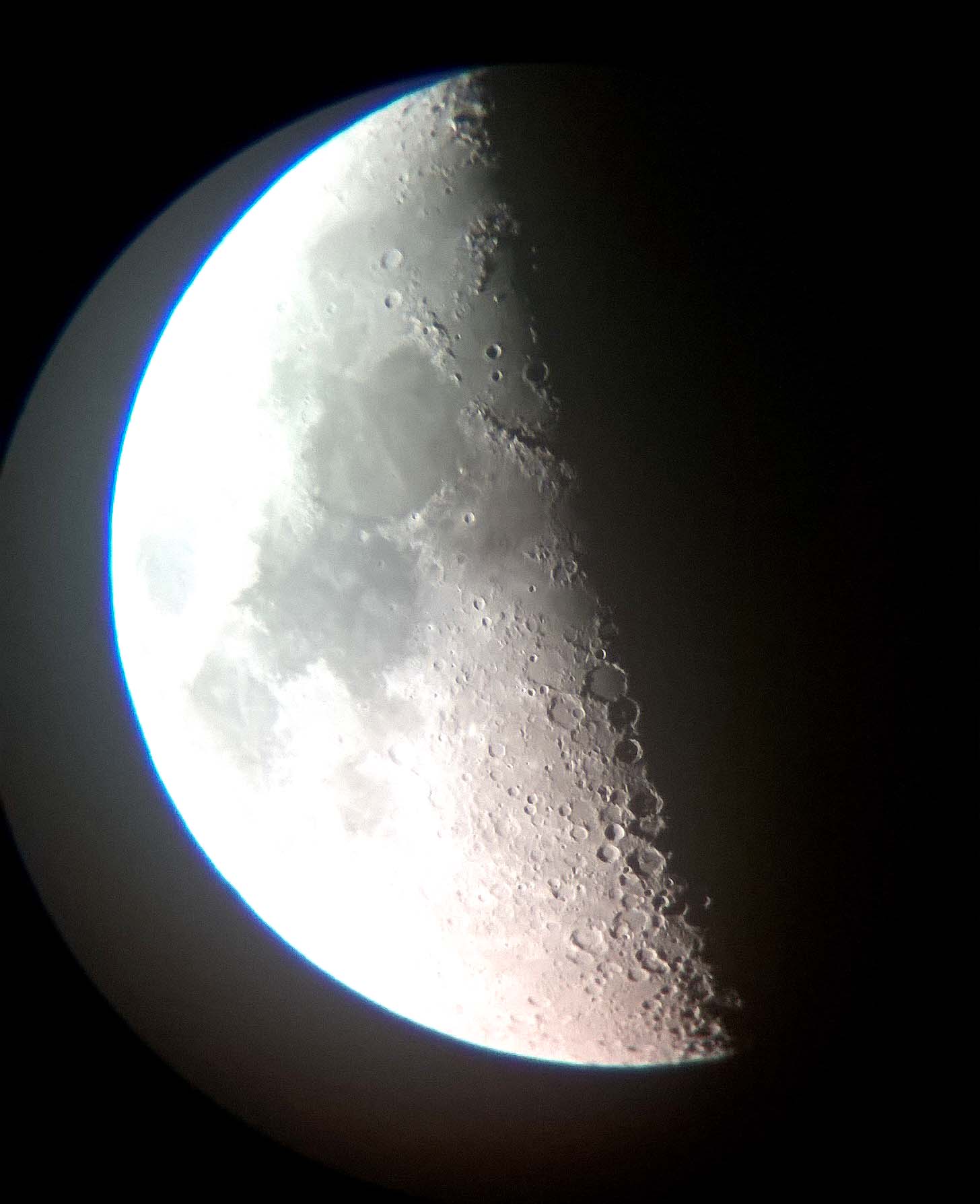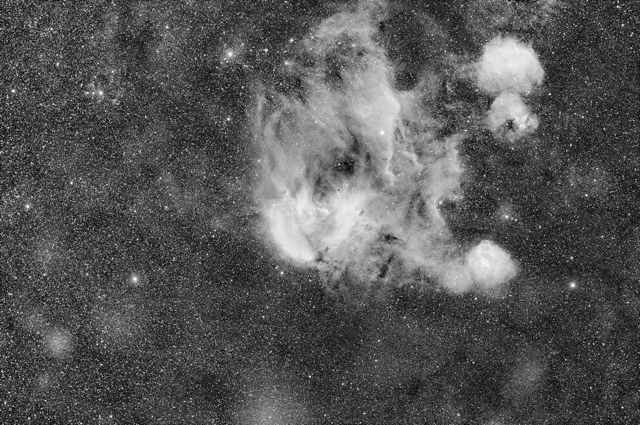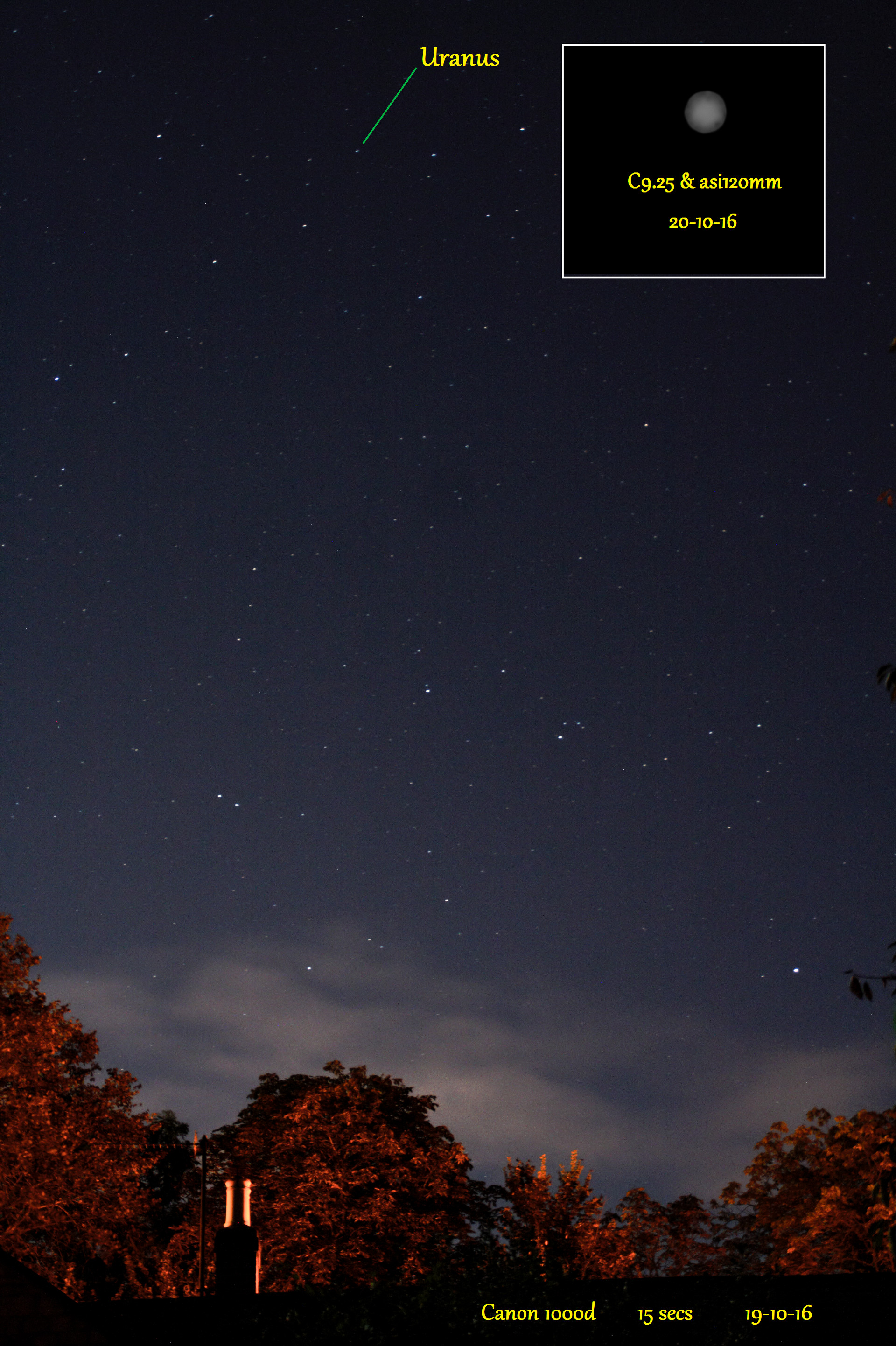Skynotes - HCO member's observing notes
Get ideas of things to see in the night sky, and find out what what HCO members have been observing, with Skynotes - excerpts from HCO member's own observing notes.
Due to the diffuculties of the weather and the time it takes to write up these Skynotes, they will be posted at varying times in the month. Therefore, to keep up to date with our latest Skynotes, make sure you like us on Facebook or follow us on Twitter!
Autumn targets
October: Altair in the Constellation Aquila
 6th August 2015 · Altair in Aquila · by Bob Sayer
6th August 2015 · Altair in Aquila · by Bob Sayer
Wide field image of Altair in the Constellation Aquila. This evening was amazingly clear and the MilkyWay was was completely dominating the night sky and just a wonderful sight. The night was so full of stars it was difficult to make out some constellations because of the myriad of stars. The attached image is roughly centred on the star Altair (alpha Aquilae) the brightest star in the constellation more...
November: NGC 6992 - Eastern Veil Nebula
19-21st September 2017 · M16· by Bob Sayer
The Veil Nebula is a large faint supernova remnant in the Constellation Cygnus around 2,100 light-hears away and was discovered in 1784 by William Herschel. It is one of the best known supernova remnants deriving it name from it’s delicate filamentary structures which stretches across space 110 light-years. This image shows a portion of the Eastern Veil Nebula, NGC 6992, NGC 6995 and IC1340 more...
Winter targets
December: M15
29th December 2015 · M1 & M15· by Bob Sayer
At long last the weather has been kind enough to finally get imaging. This is the first outing since completely overhauling my EQ6 equatorial mount and fitting a Rowen belt kit. The mount performed amazingly well for this first outing and after carrying out some final tweaks I managed to capture 2 objects. My main target for the night was M1 but as it was still early and M1 was not in my view M15 was a easy target. more...
January: Almach as a triple star once more
October 2019 · γ Andromedae· by Christopher Taylor
The beautiful double star Almach, or γ Andromedae, is one of the great telescopic sights of autumn skies and one of the finest colour-contrasted doubles in the heavens. Until 2003 a good telescope of at least 10 inches (0.25m.) aperture would have shown this beauty as a triple at high power under the best seeing, the blue component of the obvious double itself being a famous binary OΣ 38, revolving in a highly elongated orbit every 62 years. For most observers that ceased to be the case around mid-2003 more...
February: Eridanus, a neglected winter constellation
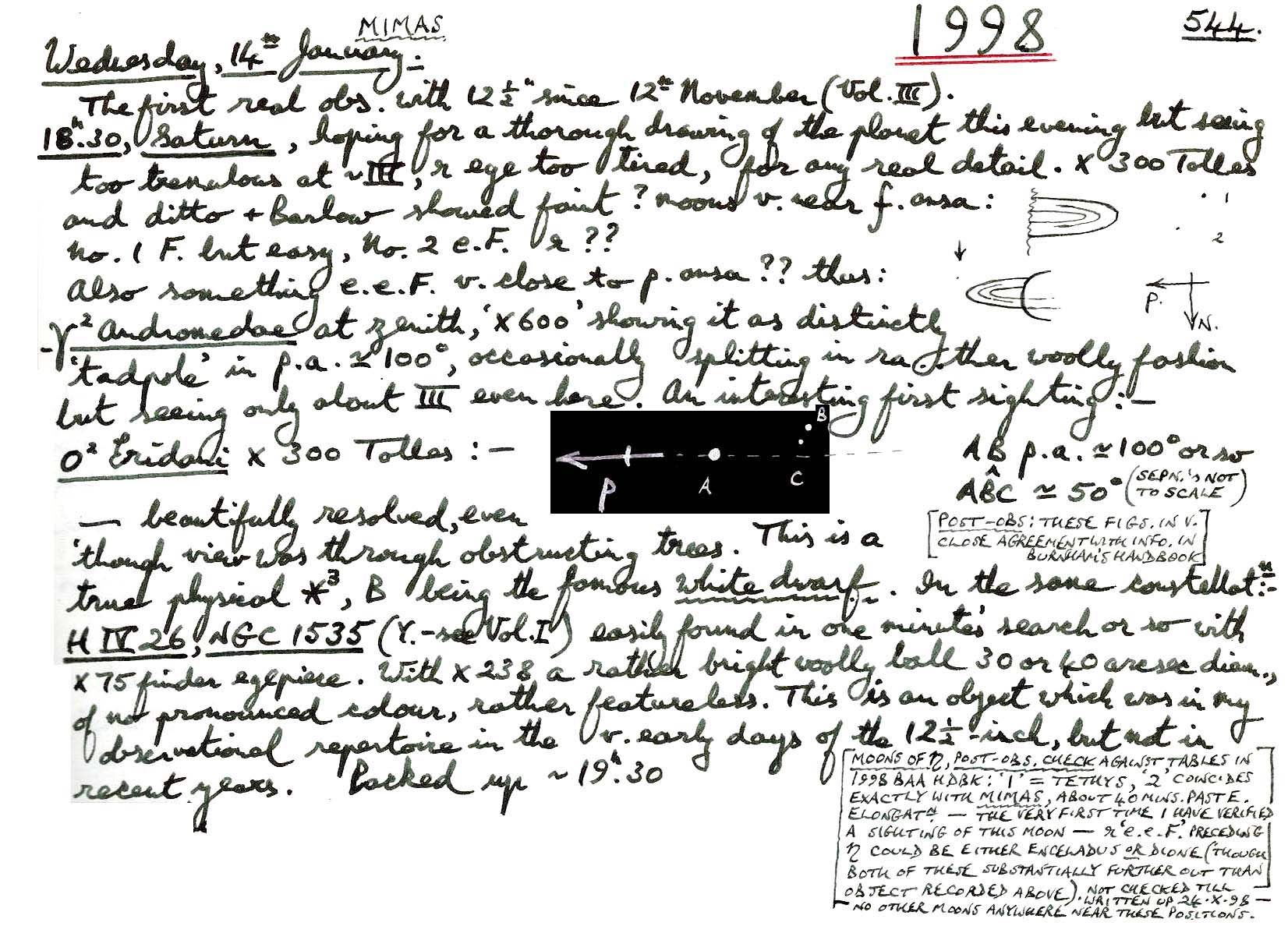 14th January 1998 & March 2013· Eridanus · by Christopher Taylor
14th January 1998 & March 2013· Eridanus · by Christopher Taylor
These notes are taken from Christopher Taylor's observations of Eridanus over the years, all using the McIver Paton telescope. A good session at the telescope last night, something which doesn’t happen all that often at our monthly HCO meetings. The mirror of the 30-inch is still in the w’shop at Walthamstow but should be back v. shortly; in its absence, we had some good views in the 12.5-inch in quite a good , if not superlative, sky more...
Winter: Observing Notes
10th November 2010 · Double stars, open & globular clusters, planetary nebulae & galaxies · by Christopher Taylor
These notes are taken from Christopher Taylor's observation notes from an evening in November 2010, using the McIver Paton telescope, for a visiting undergraduate studying the history of astronomy. 61 Cygni (first object) – 1st star-distance ever measured, F.W.Bessel, Konigsberg Obsy. 1838 – one of our nearest stellar neighbours – a v. long-period physical binary with orbit of 6 or 7x 100 years. β Cygni (Albireo) – beaut. colour-contrast, one of the finest in the heavens – but probably not binary. more...
Spring targets
March: M1
29th December 2015 · M1 & M15· by Bob Sayer
At long last the weather has been kind enough to finally get imaging. This is the first outing since completely overhauling my EQ6 equatorial mount and fitting a Rowen belt kit. The mount performed amazingly well for this first outing and after carrying out some final tweaks I managed to capture 2 objects. My main target for the night was M1 but as it was still early and M1 was not in my view M15 was a easy target. more...
March: M42 - Orion Nebula
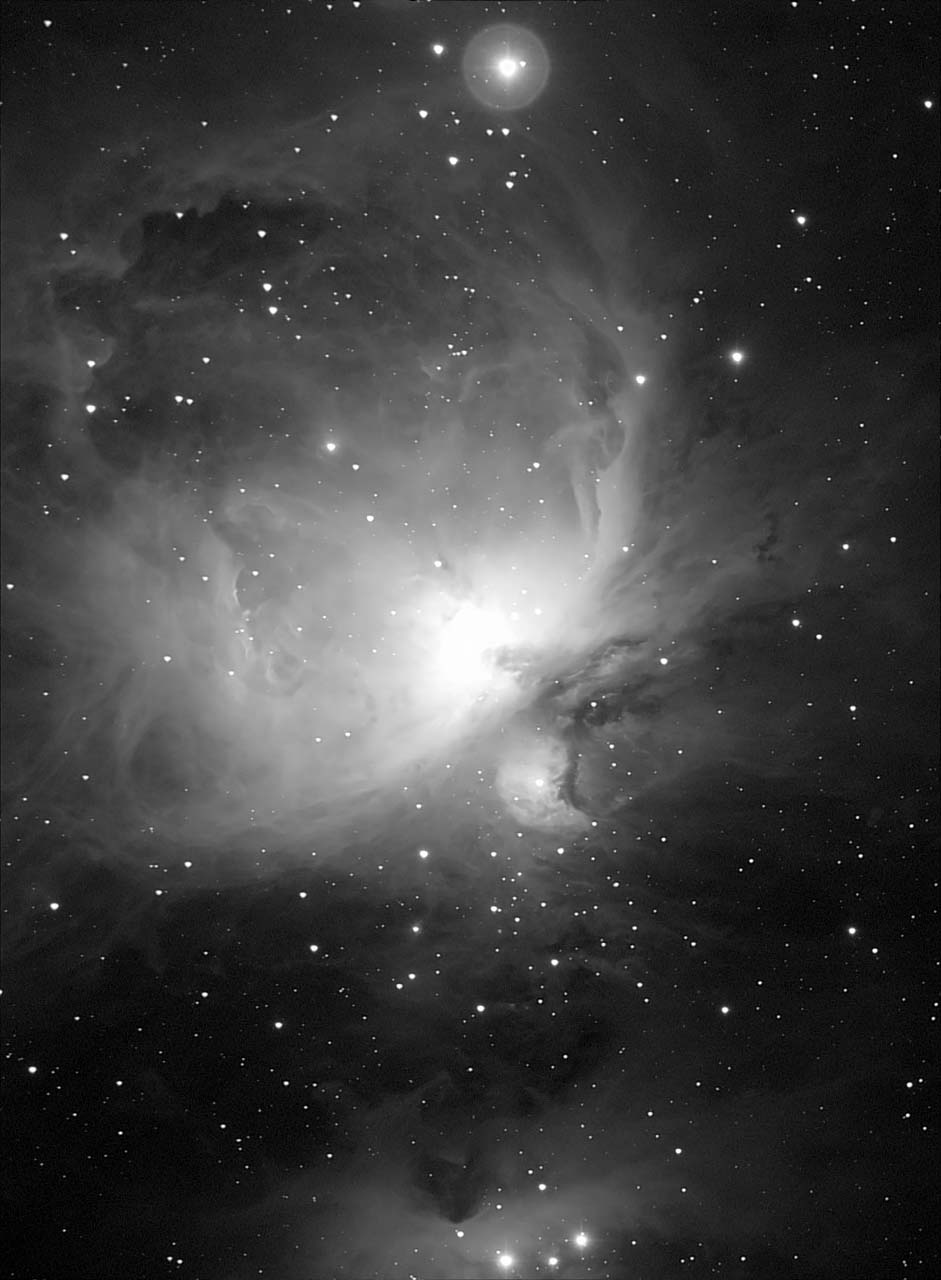 1998, 2010 & 2013 · M42 · by Christopher Taylor & Bob Sayer
1998, 2010 & 2013 · M42 · by Christopher Taylor & Bob Sayer
These notes are a collection of observations and images of the M42 Orion Nebula by HCO members Christopher Taylor and Bob Sayer. Astrophoto of the Orion Nebula by HCO member Bob Sayer in 2013. The following notes were taken from Christopher Taylor's observations of the Orion Nebula over the years, using the McIver Paton telescope (for the 1998 observations) and the Hanwell 30-inch Reflector telescope (for the 2010 observations). Glorious vision was actually more...
May: Virgo Galaxy Cluster
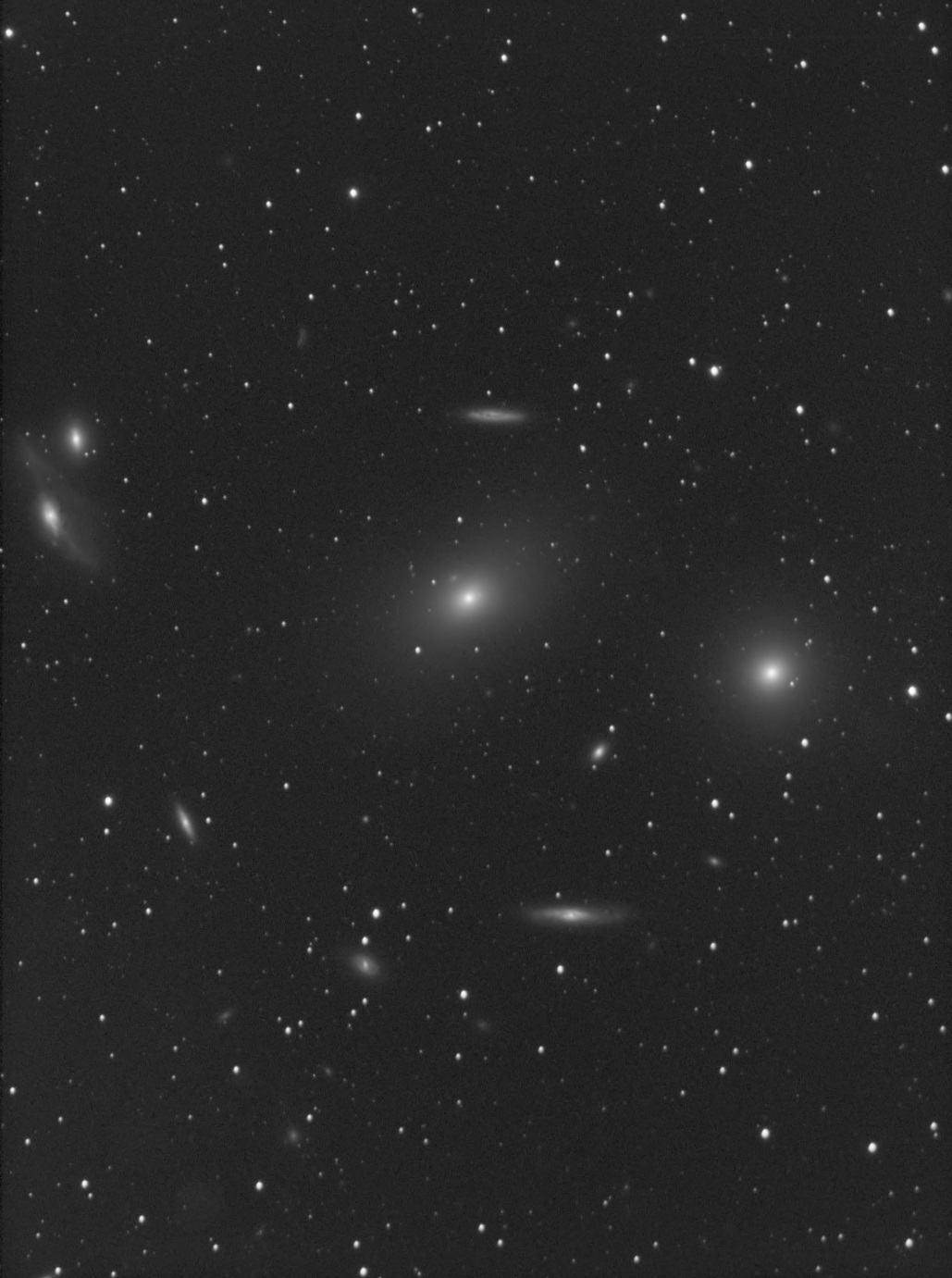 28th April 2016 · Virgo Galaxy Cluster · by Bob Sayer
28th April 2016 · Virgo Galaxy Cluster · by Bob Sayer
Finally I managed to point the telescope to the skies again. This time at the core of the Virgo Galaxy Cluster, in particular at the centre at M86 (NGC 4406) around which are a feast of Galaxies to be seen. At the LH side of the image are NGC 4435 & NGC 4438 (The Eyes Galaxies). To the right of M86 is M84 (NGC 4374). All of these Galaxies lie in a string of Galaxies known as the Markarian's Chain. Some of the larger Galaxies also visible are more...
Summer targets
June: M101 - Pinwheel Galaxy
 5th June 2015 · M101 - Pinwheel Galaxy· by Bob Sayer
5th June 2015 · M101 - Pinwheel Galaxy· by Bob Sayer
M101 is a spiral galaxy approximatly the same size as the Milky Way located in Ursa Major approx. 21 million light years away. Originally discovered by Pierre Mechain 1781 and Charles Messier added it as one of his later entries in his catalogue. William Parsons (3rd Earl of Rosse) was the first to note it's spiral structure. This Image was taken in difficult twilight skies and my first serious attempt at widefield DSLR image. more...
July: M10
25th July 2017 · M10· by Bob Sayer
It was a warn evening and seeing was average about III but lots of thin clouds drifting around so difficult to get cloud free images. In the end out of 20 images only a couple were completely clear. Unfortunately the cloud cover increased and no chance of any further images that evening. M10 is a bright Globular Cluster found in the constellation of Ophiuchus and should be plainly visible in a 4” telescope more...
August: M16 - Eagle Nebula
18th September 2017 · M16· by Bob Sayer
M16 can be found low in the Serpens-Clauda spiral arm of our Galaxy. It is estimated to be 7,000 light years away. This is a large star cluster surrounded by giant cloud of interstellar gas and dust and is an area where new stars are created, the cluster of stars being estimated at 5.5 million years old. The star cluster was discovered around 1745/6 by Phillippe Loys de Cheseaux but he made no mention of the nebula more...
All year targets
The Moon
5th January 2017 · The Moon · by Harry Tate
First-quarter Moon, taken on 5th Jan. 2017 by Harry Tate of Banbury. Harry had only begun observing the Moon two nights before, and took this excellent photo (a single shot) using the simplest possible equipment, a mobile-phone camera pointed through the eyepiece of a 60 mm. refractor. The picture captures beautifully just how much can be seen in a very small telescope.
more...
The Moon
 23rd-25th September 2015 · The Moon · by Matt Armitage
23rd-25th September 2015 · The Moon · by Matt Armitage
People often think that it is best to observe the Moon when it is full - this very bright to look at and it can look quite flat. I prefer to observe and image it when the Moon is not full and showing a phase. The line of the shadow which crosses the Moons face is called the Terminator – at this point the sunlight is at a low angle on the Moons surface and it highlights the craters and casts shadows in them. Also other features more...
Mare Imbrium
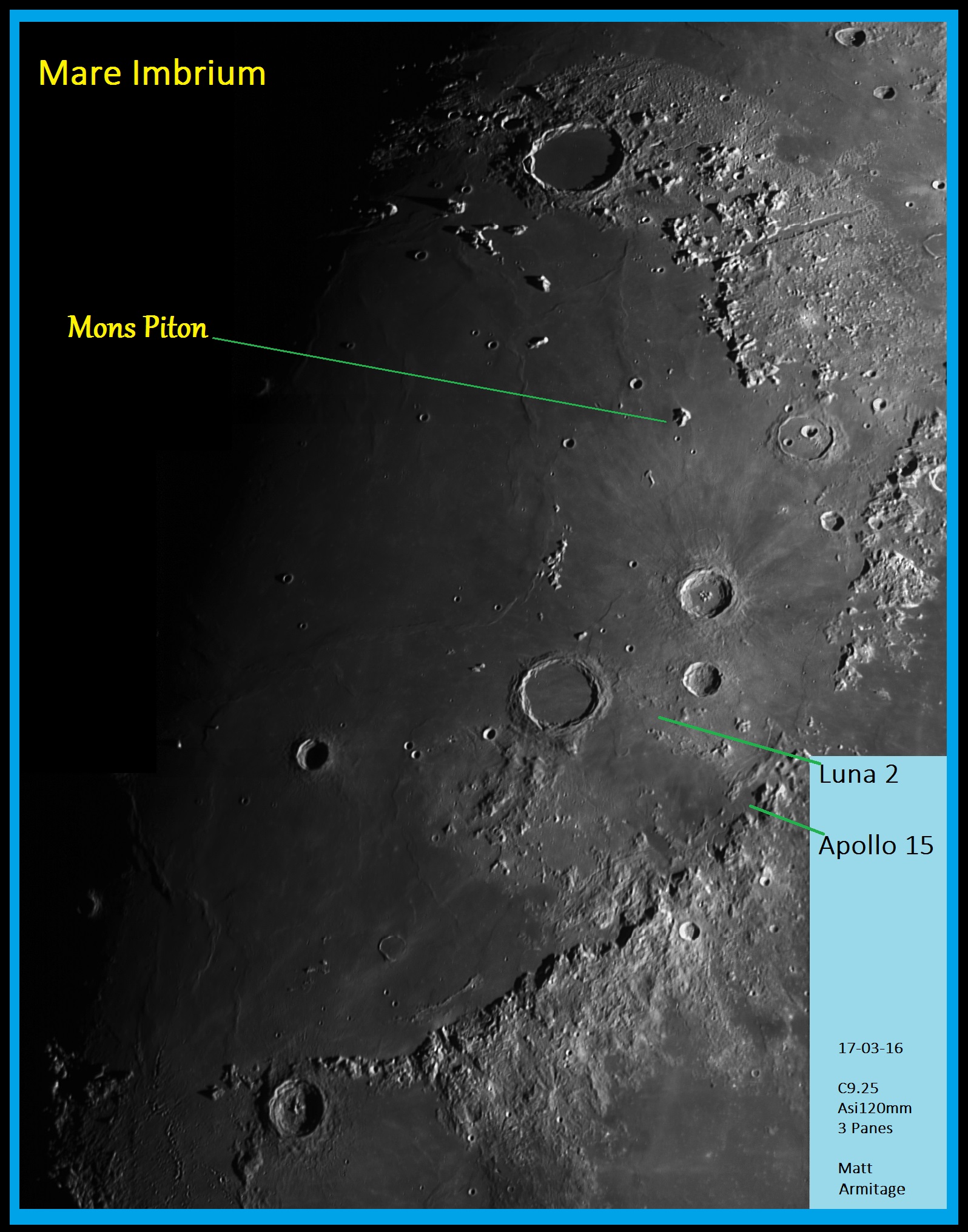 17th March 2016 · Mare Imbrium, Moon · by Matt Armitage
17th March 2016 · Mare Imbrium, Moon · by Matt Armitage
The Mare Imbrium (Sea of Showers) is estimated to be around 4 billion years old. It can be seen with small telescopes and binoculars towards the northern edge of the Moon. This massive lunar feature is one of the largest craters in the Solar System (757 x 757 miles). It was formed when a very large object hit the Moon then it filled with lava. Mountain ranges can be seen on its rim - Montes Alpes – north-east, Montes Apenninus – south-east. more...
The Sun
 3rd July 2015 · The Sun· by Matt Armitage
3rd July 2015 · The Sun· by Matt Armitage
The Sun is mostly composed of hydrogen gas and the main wavelength of light emitted from the Suns inner atmosphere is called hydrogen-alpha. By using a hydrogen-alpha filter on a telescope you can block out all other light except Hydrogen Alpha 656.281 nm. Here is an image taken on the 3rd of July from Eynsham Oxon. To the left of the image is a filament. These are a dense gas suspended in magnetic loops above the surface of the Sun – this one is edge on. more...
Star Trails over the Alps
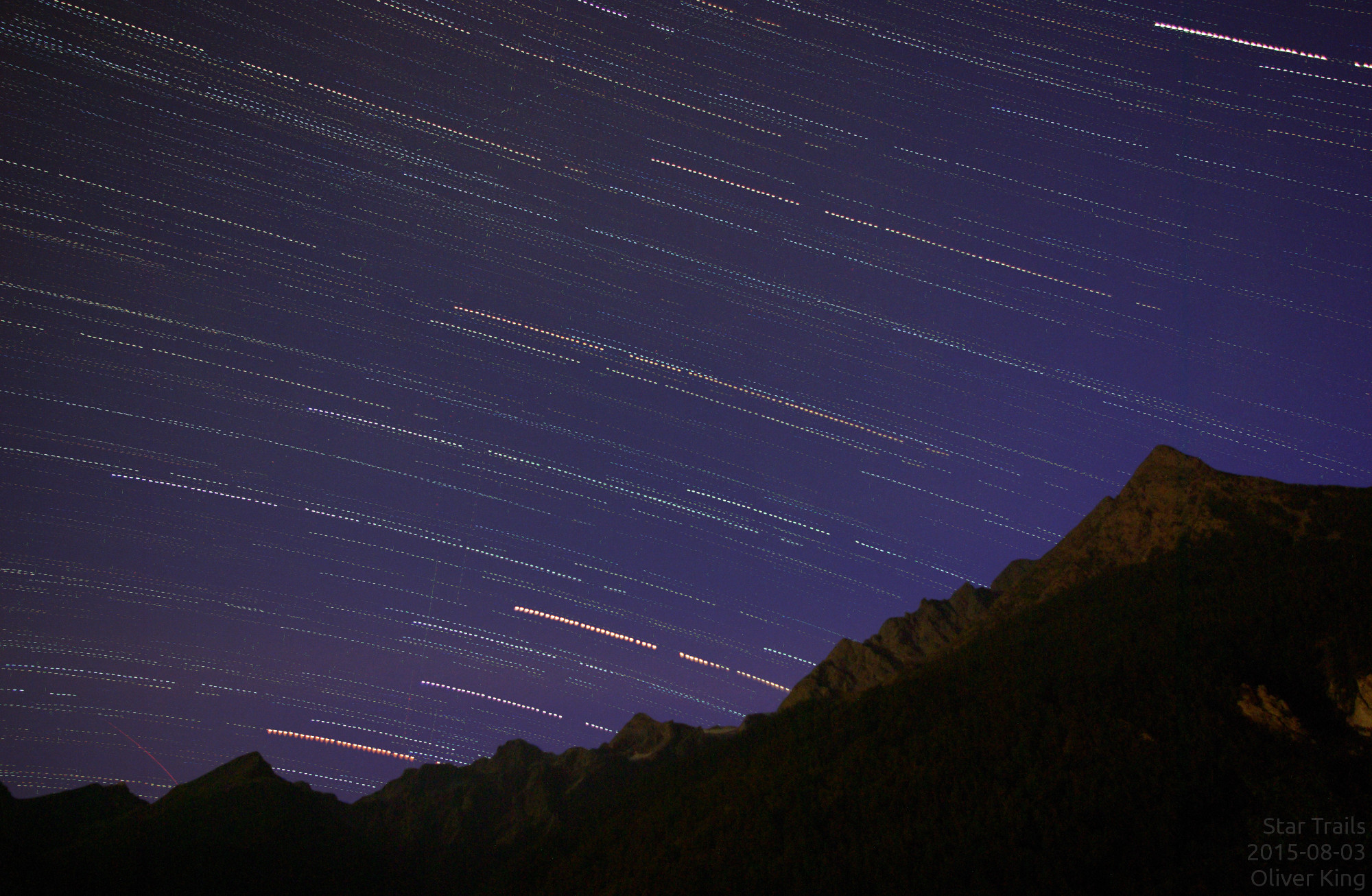 3rd August 2015 · Star Trails · by Oliver King
3rd August 2015 · Star Trails · by Oliver King
As the Earth rotates on its axis, objects in the night sky appear to move from East to West. Though this cannot be seen directly with the naked eye, it becomes very clear when watching the position of the stars over the course of an evening. This image is composed of 85 individual 30-second exposures which were processed into a single image to show the star trails over 1 hour 45 minutes. more...
iTelescope: IC 2948 - Lambda Centauri Cluster
March 2018 · IC 2948 · by Bob Sayer
This Ha image primarily of IC 2948 is a combination of just 2 x 600 seconds taken using the T12 telescope of the iTelescope facility in Sliding Springs Australia. IC 2948 is the region of nebulosity surrounding the star Lambda Centauri and lies between the Southern Cross and the rich Carina region. Even with this short exposure you can see a small group of dark clouds known as “Bok globules” more...
Variable targets
Lunar Eclipse
 29th September 2015 · Lunar Eclipse · by Oliver King
29th September 2015 · Lunar Eclipse · by Oliver King
A lunar eclipse occurs when the Earth passes between the Sun and the Moon, meaning that the Moon is in the Earth’s shadow. These can cause the Moon to go red, and are easy to observe with the naked eye. Lunar Eclipses occur at a full Moon, when the Moon is on the opposite side of the Earth to the Sun. However, Lunar Eclipses do not occur every month because the Moon’s orbit is tilted 5.16° more...
Venus & Jupiter
 25th October · Venus & Jupiter · by Matt Armitage
25th October · Venus & Jupiter · by Matt Armitage
If you look east before sunrise you can see the conjunction which has been happening over the last few weeks. Venus, Mercury, Mars, Jupiter and also the Moon appear to be grouped together and even line up. This is an optical illusion as in fact they are very far way from each other but but look this way from the Earth's position in Space. This is a mosaic and the planets have different exposures as Venus is so bright, so more...
Jupiter
18th May 2017 · Jupiter · by Bob Sayer
With the light summer nights looming on us so quickly and here in Cornwall such unpredictable weather it was time put aside the deep sky objects and look at the brightest planet that is well positioned in our skies at the moment, Jupiter.The conditions were poor with seeing at IV to V at the best plus dodging the clouds and gusts of wind up to 20mph...
more...
Saturn
 21st July 2015 · Saturn· by Bob Sayer
21st July 2015 · Saturn· by Bob Sayer
Saturn at this time can be found in the constellation of Libra and very low in the sky about 20.5º above the horizon making it slightly difficult to observe because of atmospheric disturbance. The image was taken in very poor seeing conditions, gusting winds and clouds rolling in and out all causing the planet to dance around all over the screen. An IR pass filter >650nm was used to attempt to reduce the turbulence. more...
Uranus
19th October 2016 · Uranus · by Matt Armitage
Uranus, the seventh planet from the Sun, is often classified as an "ice giant" to distinguish it from the gas giants like Jupiter and Saturn. The interior of Uranus is mainly composed of ices and rock. Uranus' atmosphere is mainly of hydrogen and helium, but it contains more "ices" such as water, ammonia, and methane, along with traces of other hydrocarbons. It has just past opposition so it is 100% illuminated. It is at 6th magnitude so that it probably out of the range of sight unless more...
Aurora
 20th December· Aurora · by Matt Armitage
20th December· Aurora · by Matt Armitage
The outer layer of the sun, called the corona, it is continuously expanding and throwing out charged particles into space called Plasma – this is called the Solar Wind. Occasionally there are eruptions on the Sun in the form of Coronal Mass Ejections CME when large amounts of Plasma are thrown out in to space. If the Earth is in way of one of these CME then the charged particles interact with the Earth's more...
International Space Station

The International Space Station (ISS) is a space station orbiting the Earth which has been continuously manned since November 2001. Due to its large size, the space station is the third brightest object in the night sky (after the Sun and the Moon), and is therefore easily visible when it passes overhead at night. Due to variations in the station’s orbit to counter atmospheric drag and avoid more...




